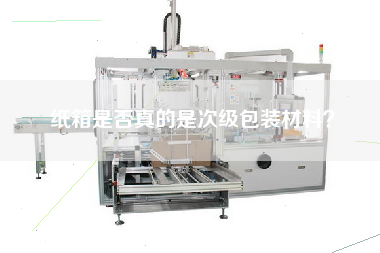Cartons are a very common packing material in our daily life. We can see cartons no matter when shopping in the supermarket or when moving. But is the carton a secondary packing material after all? This is a question worth discussing.
First of all, we need to know what is the secondary packaging material. Secondary packaging material refers to the packaging material used to protect and transport goods, usually the outer packaging material. Common secondary packaging materials are cartons, wooden cases, pallets and so on. The main function of secondary packaging materials is to protect goods and prevent them from being damaged during transportation.
So, is the carton a secondary packing material? The answer is yes. Carton is a common secondary packaging material, which can be used to protect and transport all kinds of goods. Cartons have the advantages of light weight, firmness and easy processing, so they are widely used in various fields.

Next, let’s take a look at the process of making cartons. The manufacture of cartons is mainly divided into the following steps:
1. Material selection: the production material of the carton is mainly cardboard, we need to choose the cardboard with good quality and moderate thickness.
two。 Cutting: cut the selected cardboard according to the desired size.
3. Folding: fold the cut cardboard in the prescribed way to form the basic shape of the carton.
4. Bonding: the folded cardboard is glued together to make it a complete carton.
5. Printing: cartons can be printed as needed in order to identify and distinguish different goods.
The above is the process of making cartons. The process of making cartons is relatively simple, but it is necessary to ensure that the cartons are of good quality, sturdy and durable.
Besides making cartons, we also need to pay attention to the use of cartons. When using cartons, you need to pay attention to the following points:
1. Choose the right carton: different goods need different cartons, according to the size, weight and other factors to choose the right carton.
two。 Filler: place an appropriate amount of filler inside the carton to protect the goods from damage during transportation.
3. Sealing: use an appropriate sealing method to ensure that the carton will not be opened during transportation.
4. Identification: identify the name, quantity and other information of the goods on the carton for easy identification and management.
Through the above introduction, we can see that cartons are not only a secondary packaging material, but also a very important secondary packaging material. The manufacturing process of the carton is relatively simple, but we need to pay attention to the production quality to ensure the firmness and durability of the carton. When using cartons, we need to pay attention to selecting appropriate cartons, placing appropriate fillers, using appropriate sealing methods, identifying commodity information, and so on.
In a word, carton is a very important secondary packaging material, which plays an important role in our daily life. We need to take the production and use of cartons seriously in order to ensure the safety and integrity of the goods in the process of transportation.
